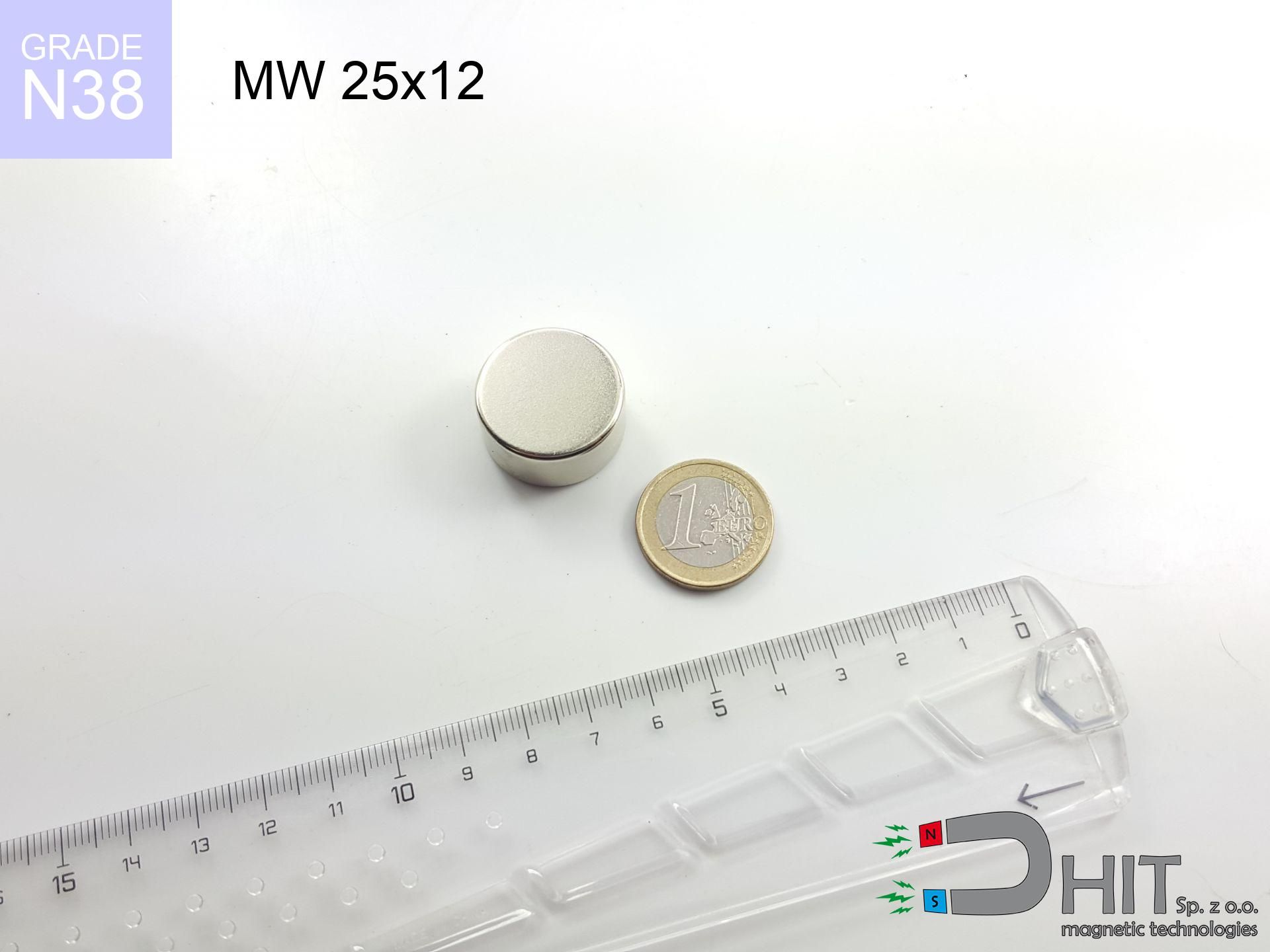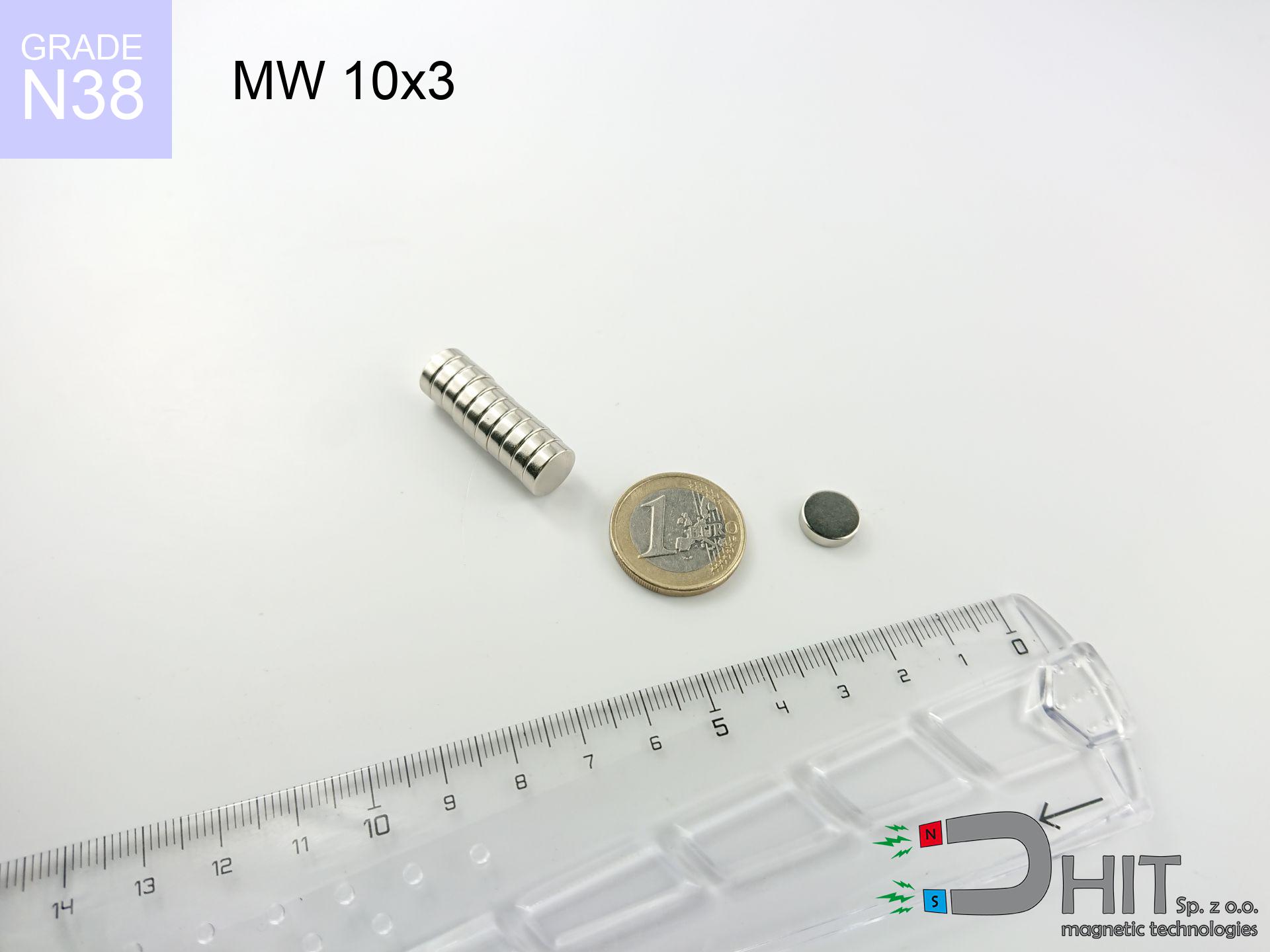SM 32x100 [2xM8] / N52 - magnetic separator
magnetic separator
Catalog no 130356
GTIN/EAN: 5906301813040
Diameter Ø
32 mm [±1 mm]
Height
100 mm [±1 mm]
Weight
554 g
Magnetic Flux
~ 10 000 Gauss [±5%]
381.30 ZŁ with VAT / pcs + price for transport
310.00 ZŁ net + 23% VAT / pcs
bulk discounts:
Need more?
Contact us by phone
+48 888 99 98 98
or get in touch using
our online form
the contact form page.
Strength and shape of neodymium magnets can be estimated with our
modular calculator.
Same-day shipping for orders placed before 14:00.
Product card - SM 32x100 [2xM8] / N52 - magnetic separator
Specification / characteristics - SM 32x100 [2xM8] / N52 - magnetic separator
| properties | values |
|---|---|
| Cat. no. | 130356 |
| GTIN/EAN | 5906301813040 |
| Production/Distribution | Dhit sp. z o.o. |
| Country of origin | Poland / China / Germany |
| Customs code | 85059029 |
| Diameter Ø | 32 mm [±1 mm] |
| Height | 100 mm [±1 mm] |
| Weight | 554 g |
| Material Type | Stainless steel AISI 304 / A2 |
| Magnetic Flux | ~ 10 000 Gauss [±5%] |
| Size/Mount Quantity | 2xM8 |
| Polarity | circumferential - 3 poles |
| Casing Tube Thickness | 1 mm |
| Manufacturing Tolerance | ±1 mm |
Magnetic properties of material N52
| properties | values | units |
|---|---|---|
| remenance Br [min. - max.] ? | 14.2-14.7 | kGs |
| remenance Br [min. - max.] ? | 1420-1470 | mT |
| coercivity bHc ? | 10.8-12.5 | kOe |
| coercivity bHc ? | 860-995 | kA/m |
| actual internal force iHc | ≥ 12 | kOe |
| actual internal force iHc | ≥ 955 | kA/m |
| energy density [min. - max.] ? | 48-53 | BH max MGOe |
| energy density [min. - max.] ? | 380-422 | BH max KJ/m |
| max. temperature ? | ≤ 80 | °C |
Physical properties of sintered neodymium magnets Nd2Fe14B at 20°C
| properties | values | units |
|---|---|---|
| Vickers hardness | ≥550 | Hv |
| Density | ≥7.4 | g/cm3 |
| Curie Temperature TC | 312 - 380 | °C |
| Curie Temperature TF | 593 - 716 | °F |
| Specific resistance | 150 | μΩ⋅cm |
| Bending strength | 250 | MPa |
| Compressive strength | 1000~1100 | MPa |
| Thermal expansion parallel (∥) to orientation (M) | (3-4) x 10-6 | °C-1 |
| Thermal expansion perpendicular (⊥) to orientation (M) | -(1-3) x 10-6 | °C-1 |
| Young's modulus | 1.7 x 104 | kg/mm² |
Table 1: Rod construction
SM 32x100 [2xM8] / N52
| Parameter | Value | Description / Unit |
|---|---|---|
| Diameter (Ø) | 32 | mm |
| Total length | 100 | mm (L) |
| Active length | 64 | mm |
| Section count | 2 | modules |
| Dead zone | 36 | mm (2x 18mm starter) |
| Weight (est.) | ~611 | g |
| Active area | 64 | cm² (Area) |
| Housing material | AISI 304 | 1.4301 (Inox) |
| Surface finish | Ra < 0.8 µm | Polished |
| Temp. class | 80°C | Standard (N) |
| Force loss (at max °C) | -12.8% | Reversible loss (physics) |
| Force (calculated) | 41 | kg (theor.) |
| Induction (surface) | ~10 000 | Gauss (Max) |
Chart 2: Field profile (2 sections)
Chart 3: Temperature performance
Elemental analysis
| iron (Fe) | 64% – 68% |
| neodymium (Nd) | 29% – 32% |
| boron (B) | 1.1% – 1.2% |
| dysprosium (Dy) | 0.5% – 2.0% |
| coating (Ni-Cu-Ni) | < 0.05% |
Sustainability
| recyclability (EoL) | 100% |
| recycled raw materials | ~10% (pre-cons) |
| carbon footprint | low / zredukowany |
| waste code (EWC) | 16 02 16 |
View also products
Advantages as well as disadvantages of neodymium magnets.
Advantages
- They have stable power, and over nearly 10 years their attraction force decreases symbolically – ~1% (according to theory),
- Neodymium magnets prove to be extremely resistant to magnetic field loss caused by magnetic disturbances,
- The use of an metallic layer of noble metals (nickel, gold, silver) causes the element to look better,
- Magnetic induction on the surface of the magnet turns out to be strong,
- Neodymium magnets are characterized by very high magnetic induction on the magnet surface and are able to act (depending on the form) even at a temperature of 230°C or more...
- Thanks to the option of flexible forming and adaptation to custom needs, magnetic components can be created in a variety of forms and dimensions, which amplifies use scope,
- Huge importance in modern technologies – they are commonly used in magnetic memories, electric motors, diagnostic systems, as well as multitasking production systems.
- Compactness – despite small sizes they offer powerful magnetic field, making them ideal for precision applications
Disadvantages
- Brittleness is one of their disadvantages. Upon intense impact they can break. We advise keeping them in a steel housing, which not only protects them against impacts but also raises their durability
- Neodymium magnets lose their power under the influence of heating. As soon as 80°C is exceeded, many of them start losing their power. Therefore, we recommend our special magnets marked [AH], which maintain stability even at temperatures up to 230°C
- Due to the susceptibility of magnets to corrosion in a humid environment, we advise using waterproof magnets made of rubber, plastic or other material stable to moisture, in case of application outdoors
- We suggest cover - magnetic mechanism, due to difficulties in realizing nuts inside the magnet and complicated shapes.
- Potential hazard related to microscopic parts of magnets pose a threat, when accidentally swallowed, which becomes key in the context of child health protection. Furthermore, small components of these devices are able to be problematic in diagnostics medical after entering the body.
- Due to complex production process, their price is higher than average,
Holding force characteristics
Maximum lifting capacity of the magnet – what affects it?
- with the use of a sheet made of special test steel, guaranteeing full magnetic saturation
- with a thickness no less than 10 mm
- characterized by even structure
- without any clearance between the magnet and steel
- for force applied at a right angle (in the magnet axis)
- in temp. approx. 20°C
Determinants of lifting force in real conditions
- Distance (betwixt the magnet and the metal), since even a microscopic distance (e.g. 0.5 mm) can cause a drastic drop in lifting capacity by up to 50% (this also applies to varnish, corrosion or dirt).
- Pull-off angle – remember that the magnet has greatest strength perpendicularly. Under shear forces, the capacity drops drastically, often to levels of 20-30% of the nominal value.
- Substrate thickness – for full efficiency, the steel must be sufficiently thick. Paper-thin metal restricts the attraction force (the magnet "punches through" it).
- Steel grade – ideal substrate is pure iron steel. Cast iron may attract less.
- Smoothness – full contact is obtained only on smooth steel. Any scratches and bumps reduce the real contact area, weakening the magnet.
- Temperature – heating the magnet results in weakening of force. It is worth remembering the thermal limit for a given model.
Lifting capacity testing was carried out on a smooth plate of optimal thickness, under perpendicular forces, however under attempts to slide the magnet the load capacity is reduced by as much as fivefold. Moreover, even a slight gap between the magnet’s surface and the plate lowers the holding force.
Safe handling of NdFeB magnets
Danger to pacemakers
People with a heart stimulator have to maintain an safe separation from magnets. The magnetic field can disrupt the functioning of the implant.
Powerful field
Handle magnets with awareness. Their immense force can surprise even experienced users. Plan your moves and respect their force.
Magnets are brittle
Beware of splinters. Magnets can explode upon violent connection, ejecting shards into the air. Wear goggles.
Keep away from children
Strictly keep magnets out of reach of children. Choking hazard is high, and the consequences of magnets connecting inside the body are fatal.
Phone sensors
GPS units and smartphones are extremely sensitive to magnetism. Direct contact with a powerful NdFeB magnet can decalibrate the internal compass in your phone.
Heat warning
Watch the temperature. Heating the magnet to high heat will ruin its magnetic structure and strength.
Flammability
Mechanical processing of NdFeB material carries a risk of fire risk. Magnetic powder oxidizes rapidly with oxygen and is difficult to extinguish.
Magnetic media
Do not bring magnets close to a purse, computer, or TV. The magnetic field can permanently damage these devices and erase data from cards.
Crushing risk
Watch your fingers. Two powerful magnets will join instantly with a force of massive weight, destroying everything in their path. Exercise extreme caution!
Avoid contact if allergic
Certain individuals suffer from a contact allergy to Ni, which is the common plating for neodymium magnets. Extended handling might lead to an allergic reaction. It is best to use protective gloves.

![Magnetic bar SM 32x100 [2xM8] / N52 Magnetic bar SM 32x100 [2xM8] / N52](https://cdn3.dhit.pl/graphics/banners/magnet.webp)
![SM 32x100 [2xM8] / N52 - magnetic separator](https://cdn3.dhit.pl/graphics/products/sm-32x100-2xm8-war.jpg)





